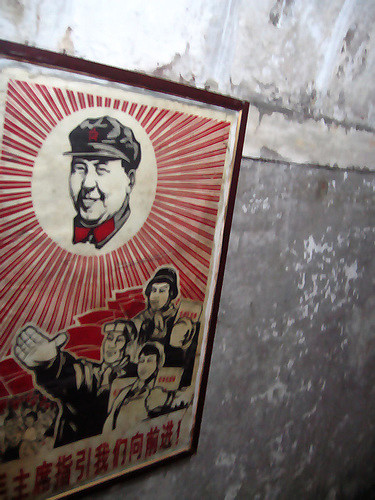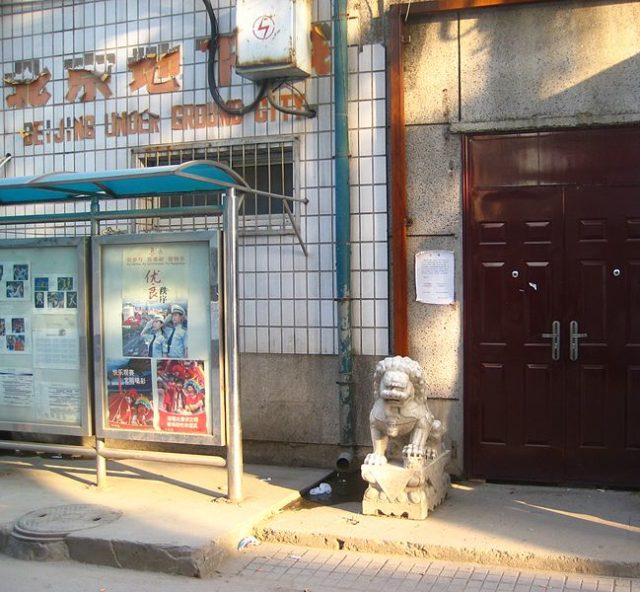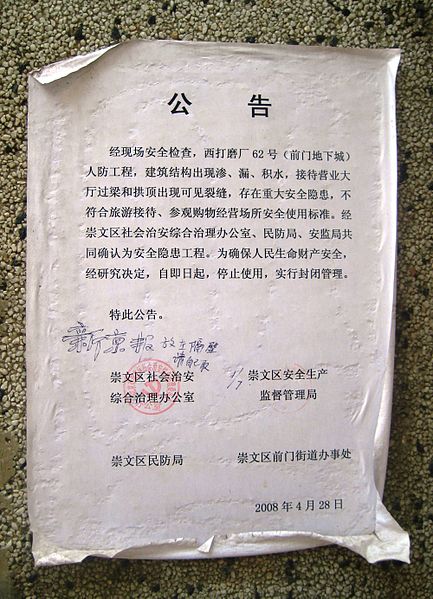Following the orders of Mao Zedong, an underground city was born, right below Beijing. It was built to fit millions of people, and to save them from the devastating effect of a nuclear warfare. And it all took place in 1969 during the Soviet-Chinese tensions. Fearing that the Soviets might start dropping nuclear bombs on them, Mao Zedong gave order for the construction of this underground tunnels that pretty soon received the nickname of “The Underground Great Wall.”
Given their motive, the tunnels were designed to be blast-proof, saving the civilians from a biological or any other kind of attack. Given the fact that the Chinese were expecting a nuclear holocaust and that their stay underground wasn’t clearly defined in terms of time, the tunnels were equipped with restaurants, schools, factories and even theatres and roller skating park, to keep their spirits up during dark times.
Facilities such as warehouses and mushroom farms were also included. There were around 70 sites were water wells could be dug in case the underground dwellers needed more water.
The ventilation system used for this underground city was flawless and consisted of around 2,300 shafts that could have been easily modified and sealed shut in case of gas poisoning from the outside. Besides shafts, there were water-proof hatches, concrete gates and deep within a nuclear fallout.

Being a military installation, the exact length of the tunnels was never disclosed, which proved to be fertile ground for developing speculations, such as that every important residence has a secret trap door that leads right down to the tunnels.
Or even that the tunnels connect various important landmarks in Beijing such as the commercial area known as Xidan, or Zhengyangmen, a gate from the historic city wall of Beijing. Following the speculations, the idea behind this tunnels was to house half of the population of Beijing while the other half was taken deep into the Western Hills.

Around 300,000 local people such as students were included in the process of constructing the underground town; hard and tedious work that included no heavy machinery. Mao Zedong even went as far as destroying ancient and historically important walls and towers and gates, the likes of which included Xizhimen and Fuchengmen in order to provide the much-needed construction material.
Obviously, the nuclear war never occurred and the tunnels remained abandoned, although are regularly checked for water leakage in an attempt to prevent flooding. Part of the tunnels though was used as a tourist attraction at the start of the new millennium, during the first decade, when they were closed for renovation.
Back in the days when the tunnels were open to visitors, the complex itself was a favorite destination for tourists. But since 2008, it has remained closed, abandoned, vacant, and forgotten.According to vice.com “Having never been fully operational, it is largely forgotten and neglected these days. In fact, most Beijingers aren’t even aware it exists”.
Though some enterprising local people managed to locate one of the forgotten entrances and now charge an entrance fee of about 2 dollars. The guided tours only show a small portion of the complex. Inside the visitors could see a number of signposts that describe what was the purpose of some of the rooms. A portrait of Mao Zedong is also included and hangs among various murals and slogans, including one which encourages people to prepare for famine.

Another section of the tunnels is used as a silk factory, where workers gather silk from silkworm cocoons. Given the fact that the true size of this place is unknown, many homeless people use portions of the tunnels as a shelter, far from the surface.
For now, much of the tunnels remain closed to the public, though what little is offered is enough to depict the fear from the days, when a nuclear threat hung over Beijing.
